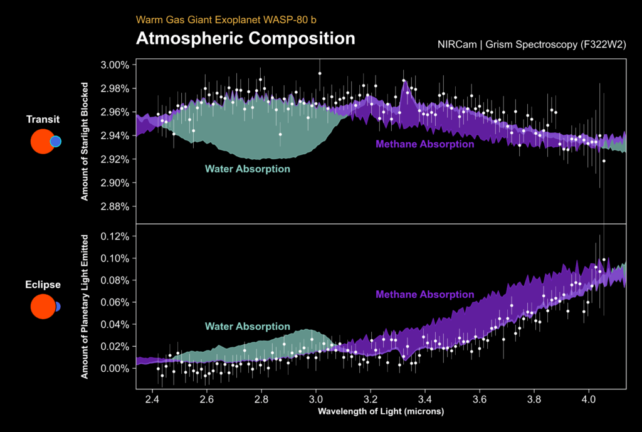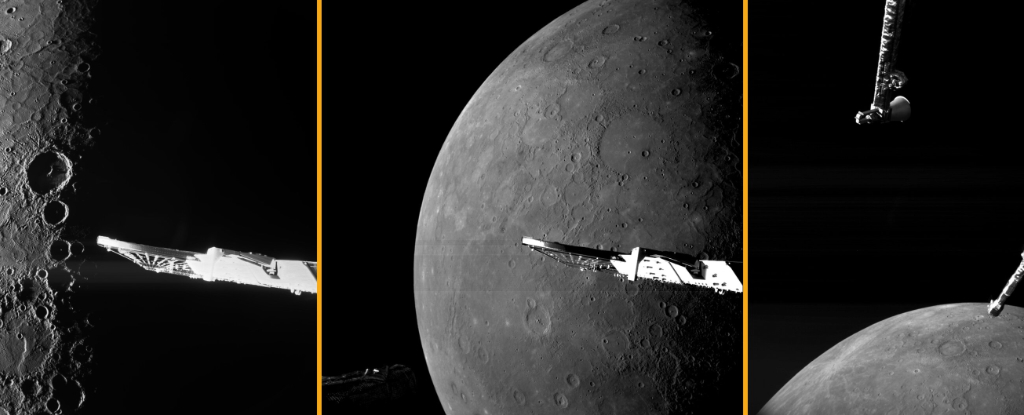If there’s one chemical that causes excitement in the search for biosignatures on other worlds, it’s methane. It’s not a slam dunk because it has both biotic and abiotic sources.
But finding it in an exoplanet’s atmosphere means that planet deserves a closer look.
Methane captures scientific attention mainly because of its short duration in a planetary atmosphere. Methane can’t withstand starlight for very long, at least not in terrestrial atmospheres. It succumbs to photodissociation and needs to be replenished continually to maintain its presence in an atmosphere.
If a rocky planet has a lot of methane, then the source has to be massive, making a biotic source likely. On Earth, biological activity creates an enormous amount of methane.
Metabolically, methane is not difficult to make.
Methane is common in our Solar System, though not necessarily plentiful. As far as scientists can tell, it’s all abiotic. Processes like serpentinization could explain it.
Serpentinization is a natural, abiotic process involving water, carbon dioxide, and the mineral olivine. Olivine is common on Earth and is the primary component of our planet’s upper mantle. We’ve also found it on the Moon, on Mars, and on some asteroids.
Recently, the James Webb Space Telescope detected methane in the atmosphere of WASP-80b, a gas giant about half as massive as Jupiter. WASP-80b orbits a K-type main sequence star about 1.5 billion years old. WASP 80 is about 162 light-years away, and WASP-80b is the only planet detected around the star so far.

Since WASP-80b is a gas giant, then life is ruled out, barring some extreme sci-fi scenarios. But the serpentinization of olivine, the most well-known abiotic source of methane, is also ruled out since WASP-80b is not a rocky planet. But finding it is still interesting.
That’s partly because we can now compare the exoplanet to the methane-containing atmospheres of Uranus and Neptune in our own Solar System. That can only help us understand future methane detections better.
A new paper published in the journal Nature presents the detection. It’s titled “Methane throughout the atmosphere of the warm exoplanet WASP-80b.” The lead author is Taylor Bell, a post-doc researcher at the Bay Area Environmental Research Institute.
WASP-80b is a warm Jupiter. Its temperature is about 550 Celsius (1,025 F; 825 K.) So it’s in between hot Jupiters like HD 209458 b (the first transiting exoplanet discovered) and cold Jupiters, like our Solar System’s largest planet. Our Jupiter is about 112 Celsius (235 F; 125 K.)
The temperature is an important point. There’s a dearth of methane detections in exoplanet atmospheres, so at this stage of the game, each detection plays an important role in developing atmospheric theory and guiding follow-up research.
WASP-80b’s temperature puts it in “an interesting transitional regime where equilibrium chemistry models predict that there should be detectable CH4 and CO/CO2 features in the planet’s transmission and emission spectra…” the authors of the research explain.
WASP-80b is really close to its red dwarf star and takes only three days to orbit. Because the planet is so far away and so close to its star, even the powerful JWST can’t actually see it. Instead, astronomers used the JWST to study the combined light from the star and the planet in transits and eclipses.
There haven’t been many methane detections in exoplanet atmospheres by telescopes like the Hubble and the Spitzer, which can both observe in infrared, though not like the JWST can. The lack of detections led scientists to develop theoretical explanations of how methane could be depleted in atmospheres. High metallicity, high interior heat flux, and other reasons were explored as methane depletion mechanisms.
Since the JWST has now detected methane, it raises an important question.
“However, this definitive detection of methane throughout the atmosphere of WASP-80b with low-resolution, JWST spectroscopy raises the question to what extent past non-detections were affected by the sparse wavelength coverage and precision achievable with HST and Spitzer,” the authors write.
So if astronomers keep detecting methane in more exoplanet atmospheres, we may have to change our thinking about methane as a biosignature.
“As we find methane and other gases in exoplanets, we will continue to expand our knowledge about how chemistry and physics work under conditions unlike what we have on Earth, and maybe sometime soon, in other planets that remind us of what we have here at home,” the authors wrote in a NASA blog post.
The researchers explain that finding exoplanets with methane in their atmospheres also helps us understand our own Solar System.
“NASA has a history of sending spacecraft to the gas giants in our solar system to measure the amount of methane and other molecules in their atmospheres,” the authors write.
“Now, by having a measurement of the same gas in an exoplanet, we can start to perform an “apples-to-apples” comparison and see if the expectations from the solar system match what we see outside of it.”

The researchers also say that measuring methane alongside water helps define how and where a planet formed.
“For example, by measuring the amount of methane and water in the planet, we can infer the ratio of carbon atoms to oxygen atoms,” they write.
“This ratio is expected to change depending on where and when planets form in their system.” Astronomers can use this data to determine if a planet formed close to its star or formed further away and then migrated inward.
The JWST likely isn’t done with WASP-80b. This data is from the space telescope’s NIRCam instrument. Future MIRI and NIRCam observations will probe the planet at different wavelengths, which should detect other carbon molecules like carbon monoxide and carbon dioxide.
“Our findings lead us to think that we will be able to observe other carbon-rich molecules, such as carbon monoxide and carbon dioxide, enabling us to paint a more comprehensive picture of the conditions in this planet’s atmosphere,” the researchers explain.
While methane catches everyone’s attention because of its link to biology, this research shows us another side to methane. It can help us understand how and where some planets formed and if they migrated.
Methane detections in exoplanets will help us build a better overall understanding of exoplanet atmospheres. They can even help us understand our own Solar System, about which we still have so many questions.
The JWST is poised to play a key role in building our knowledge of methane and atmospheres.
“One thing is clear: the journey of discovery with the James Webb Space Telescope is brimming with potential surprises,” the authors say.
This article was originally published by Universe Today. Read the original article.





